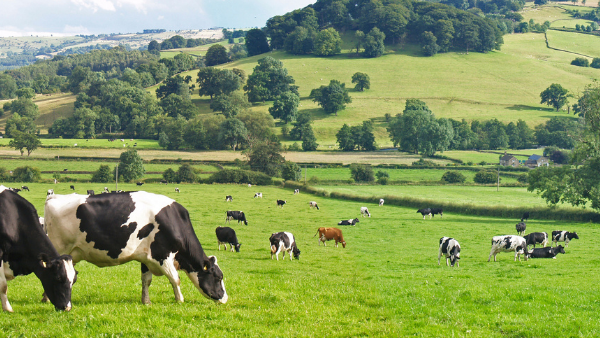Author
Josie Edwards continues our series looking at the potential shape of farming and food production, by considering the recommendations of the World Resources Institute (“WRI”) 2019 report ‘Creating a Sustainable Food Future’.
The WRI report
The report has a global focus and addresses the fundamental question: how can we adequately feed nearly 10 billion people by 2050 in ways that meet climate goals and reduce pressures on the environment? The report predicts that population growth and rising incomes will cause global food demand to increase by more than 50% by 2050, and demand for meat and dairy products by nearly 70%. It considers potential strategies to address the challenges and provides a ‘menu’ of possible solutions.
The key challenges
The report highlights three interrelated challenges:
- Food supply
The need to provide sufficient, nutritious food for everyone. If consumption trends continue, global food production must increase by more than 50% by 2050 to feed the worldwide population adequately.
- Land use
This increase in food production must be achieved without a net expansion of agricultural land beyond the 2020 area, to protect natural ecosystems, crucial to biodiversity and to mitigate against climate change. Without systemic change, crop and pasture land will need to increase by circa 600 million hectares by 2050 to meet projected demand.
- Greenhouse gas (“GHG”) emissions
The report concludes that farming is a “significant and growing source” of GHG emissions and recommends reducing emissions by two-thirds from 2020 levels.
- The solutions
The report sets out a 22-item menu which is divided into five main ‘courses’ that could together deliver solutions if implemented in time, at scale and with sufficient dedication globally, across the public and private sectors:
- Reduce growth in demand for food and agricultural products
- Increase food production, without expanding agricultural land use
- Protect and restore natural ecosystems and limit agricultural land-shifting
- Increase fish supply, productivity and environmental impact (through improvements to aquaculture and wild fisheries management)
- Reduce GHG emissions from agriculture
The authors highlight the need to tailor the approach to suit the needs of individual countries and ecosystems.
Several key themes can be identified within the 22-item menu:
- Raise productivity via increased efficiency of natural resource use e.g. increasing crop yields through improved crop breeding.
Every hectare of global pasture, capable of and appropriate for sustainable intensification must be fully exploited and growth of output/productivity per hectare must increase. This is likely to be achieved primarily by farmers in developing countries adopting developed-world production techniques, leading to “efficiency gains”.
- Manage rate of growth in demand by:
- reducing food loss and waste at all points in the supply chain;
- shifting the diets of high meat consumers towards more plant-based diets;
- limiting the diversion of edible crops and land into bioenergy production; and
- education and healthcare programmes aimed at reducing birth rates.
- Link agricultural production with ecosystem protection via government measures – e.g. expressly link efforts to boost yields with legal measures to protect forests, savannas and peatlands from conversion to agriculture and to restore such habitats wherever possible.
The authors conclude that it makes little sense to remove land from food production, if it is efficient or could become so. Reforestation and restoration should focus on land with better restoration potential than food production potential i.e. on unproductive or marginal agricultural land. However, their reforestation target (at least 585 ha) also requires significant progress with slowing food demand and increasing productivity, if enough land is to be ‘liberated’ for reforesting.
- Moderate ruminant meat consumption – the report concludes that by 2050, the 20% of the world population who would be high ruminant meat consumers, must reduce their 2010 level of consumption by 40%.
The authors’ view is that this change presents the most promising strategy of various models of diet shifts for potential positive impact on land use and GHG emissions.
It isn’t all bad news for ruminant meat producers – even a 30% decline in global ruminant meat demand (relative to the baseline scenario) would still lead to an overall 32% rise in demand between 2010 and 2050 – a significant increase, but far less than the 88% growth anticipated if growth is left unchecked.
- Require production-related climate mitigation/GHG emission reductions by focusing on methane produced via enteric fermentation by ruminants, nitrogen fertilisers, rice growing and manure and also by increasing energy efficiency in the sector and shifting to non-fossil, low-carbon energy sources (e.g. solar, wind). Improving ruminant production systems in developing regions again presents the major opportunity for reducing methane emissions, as well as the productivity gains noted in (a) above.
- Technological innovation is identified as offering huge potential, providing the opportunity is taken to innovate in multiple ways in every necessary area. Progress requires large increases in R&D funding and flexible regulation to encourage the private sector to develop and market new technologies.
Conclusion
The need for urgent and decisive worldwide action is clear and the report highlights the importance of linking food production and ecosystem protection at every level – policy, finance, farm practice – to avoid destructive competition for scarce and precious resources. It identifies one guiding principle: the need to make land-use decisions that enhance the efficiency of both agriculture and ecosystem services.
This chimes as a key take away for British agriculture. As the report highlights, productivity and efficiency levels are already high in the developed world and will be difficult to improve upon, except for quite marginal gains. Instead the focus needs to be on maintaining production levels, whilst simultaneously encouraging dietary change, limiting waste, restoring ecosystems and habitats – (wherever possible but not at the expense of productive agricultural land) and continuing technological innovation. It is also clear that responsibility for changing our systems needs to be shared by stakeholders along the whole food supply chain, including processors, consumers and government.
Print article

